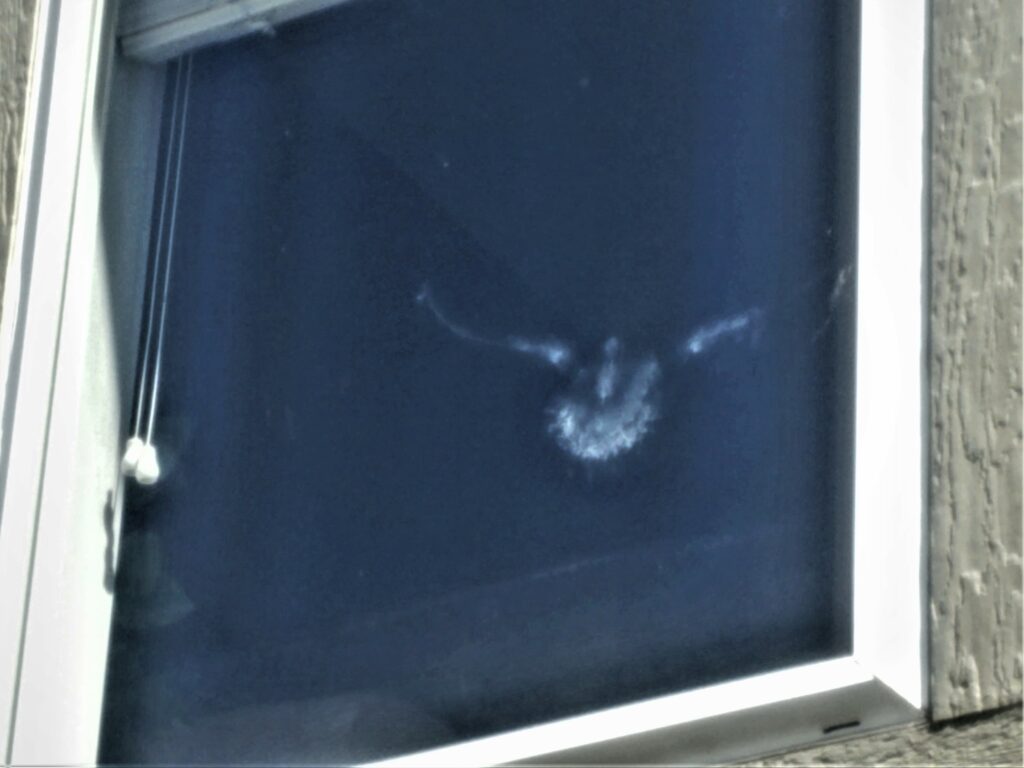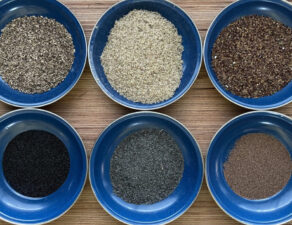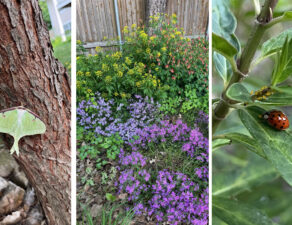
Birds colliding with windows is more common than you’d think. Once we’ve drawn birds and insects to our increasingly native yards, we can take simple steps to minimize two common potential dangers: window collisions and disorientation caused by nighttime lights.

Many of us know the pleasant satisfaction of adding native flowers, shrubs, or trees to our landscapes (create a bird-friendly yard with native plants). Environmental issues sometimes feel overwhelming, but choosing natives is an easy way to help whether we’re planting acres, suburban lots, or apartment balconies.
The Impact
An estimated 600 million birds die each year in the United States after colliding with windows. Birds hit windows because they don’t understand the concept of glass. Humans learn to anticipate glass even when we can’t see it. Door and window frames, for example, signal ‘glass’ to us. Birds don’t learn those cues. Instead of seeing ‘glass’, they either see through it to houseplants or vegetation on the far side of a home, commercial building, or walkway. Or they mistake reflections of trees and plants for the real thing and are injured or killed trying to fly to the reflected vegetation.

Innovative Design Helps Save Lives
Innovative design and material choices in new construction reduce window collisions before the first footing is poured. Birds just need a little help seeing the glass. By making a few adjustments, we can soften the impact when collisions occur. Window treatments can be nearly invisible to the human eye, as with UV film, some fritted glass, and window markers – patterns of dots or lines that break up reflections when applied to the outside surface of the glass. Other intentionally visible treatments, like murals, etched glass designs, and even advertisement window clings are other great options. Birdsaver or zen window curtains, a series of cords hung outside windows, are effective and visually appealing.

How Can We Soften The Impact When Collisions Occur?
Exterior window screens help, as do specific feeder and plant placement. Exterior window screens act like mini trampolines when a bird hits a window, absorbing some of the impact. Screens are aesthetically pleasing, and like many other options, decrease energy usage. When feeders are attached to windows or hung as close to windows as possible, the short distance from feeder to window prevents birds from reaching dangerous speeds before impact. Foundation plantings near windows help in the same way.
What About Night Migrators?
Night migrators navigate in part by using the moon and stars. Birds disoriented by artificial light exhaust themselves as they circle structures, wasting energy vital for migration. Tired and confused, they collide with windows, resulting in injury or death. Luckily, the solution couldn’t be simpler: reduce or modify nighttime lighting, especially during migration. Turning off or dimming lights, using warmer temperature bulbs (think red/yellow instead of the blue end of the spectrum), and shielding lights to only shine downward have proven effective at commercial sites. These same steps will also help at home. As a bonus, modifying lighting helps insects – an important food source for birds.
Visit BirdSafeKC, Lights Out Heartland, and The American Bird Conservancy.
Article Written by Guest Author: Theresa Enderle, Missouri River Bird Observatory







